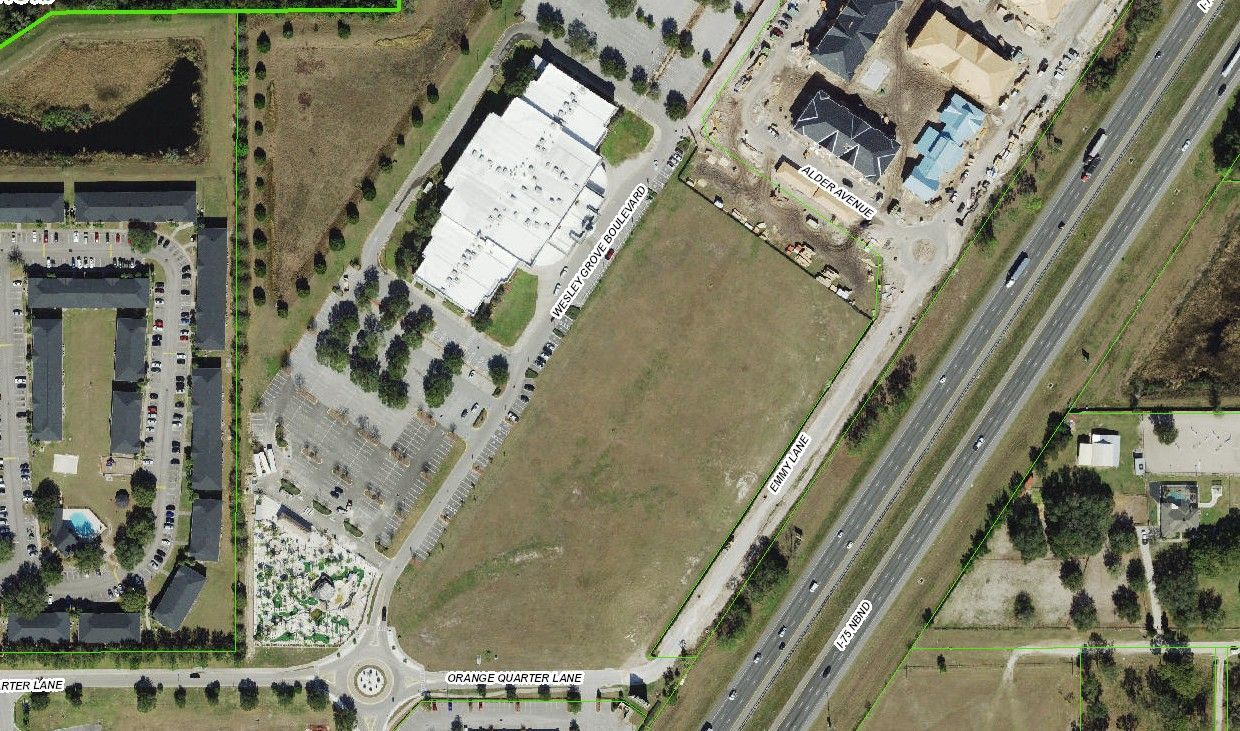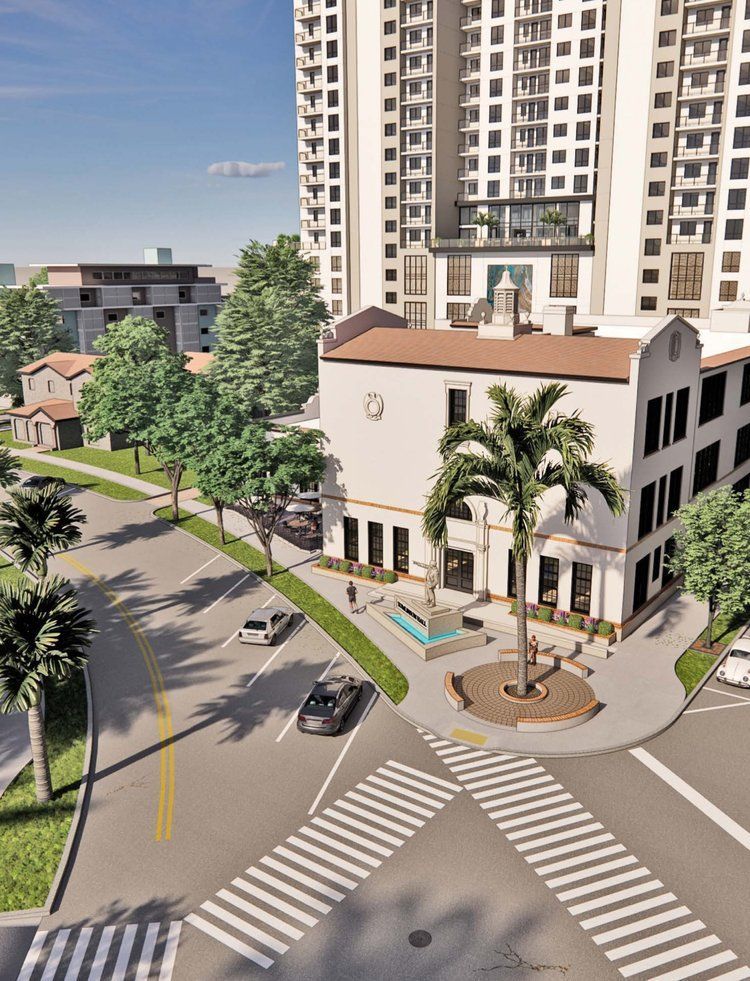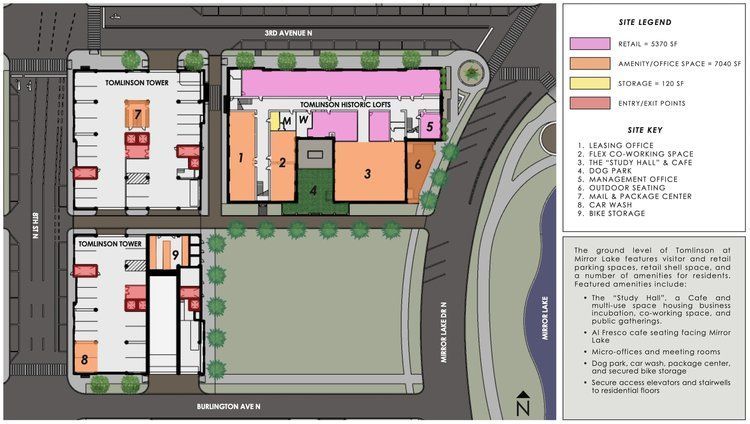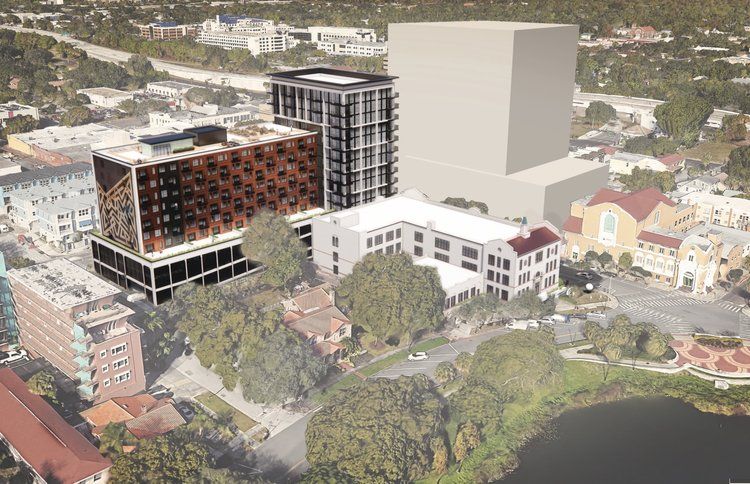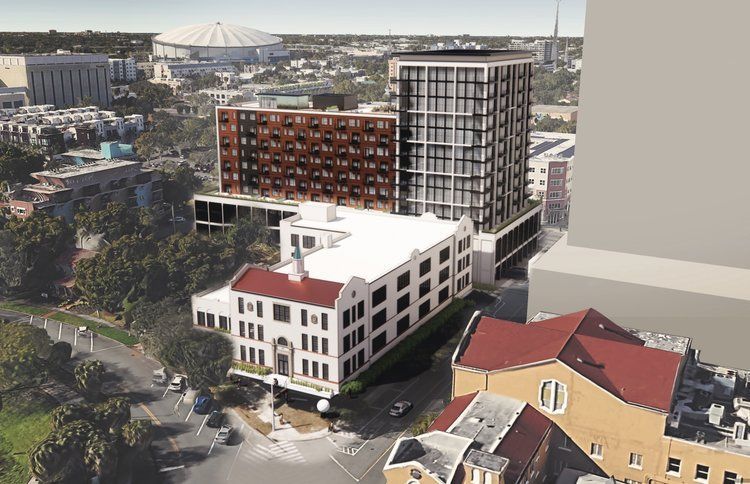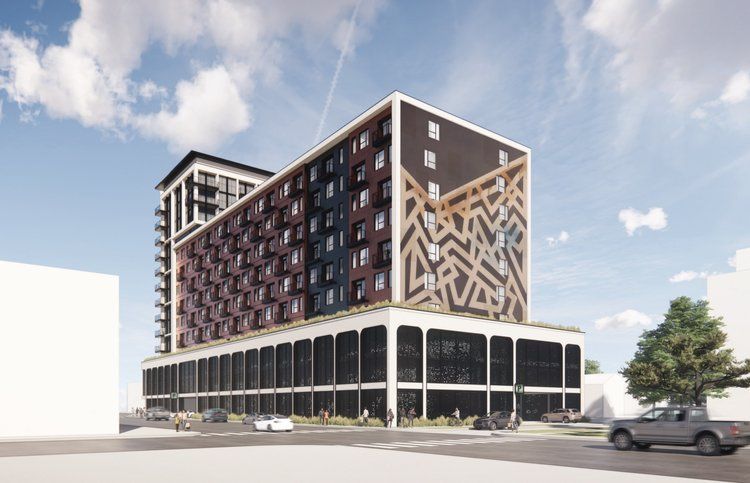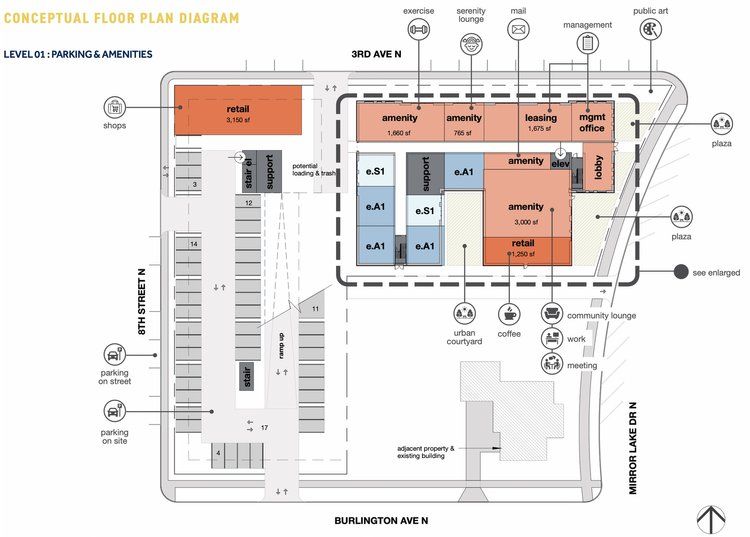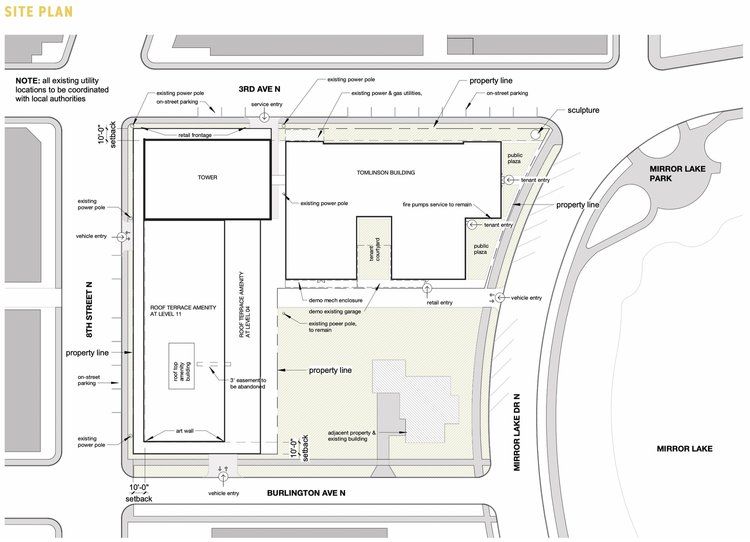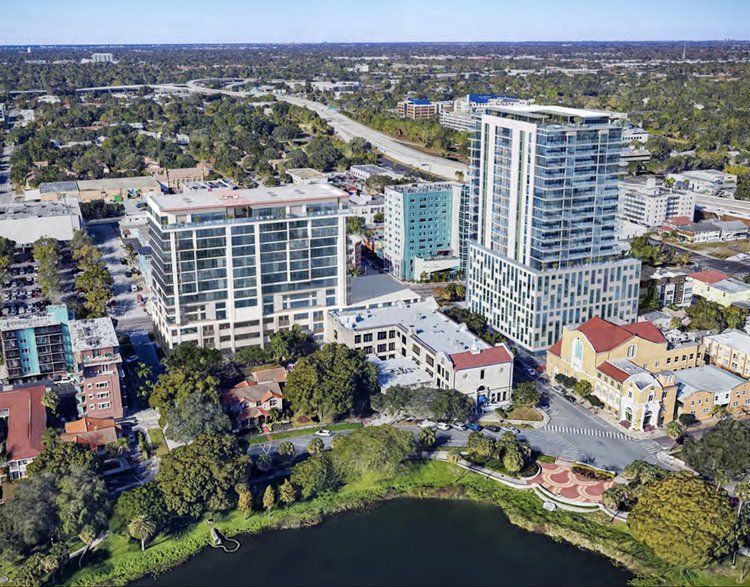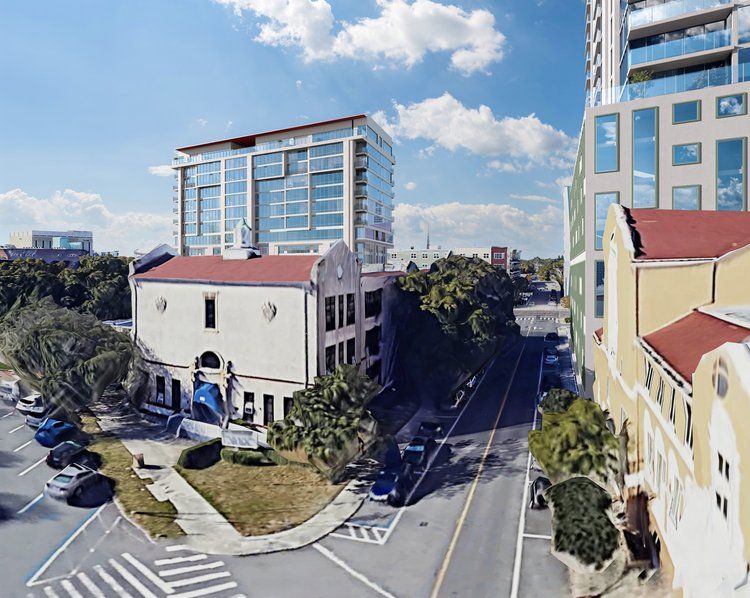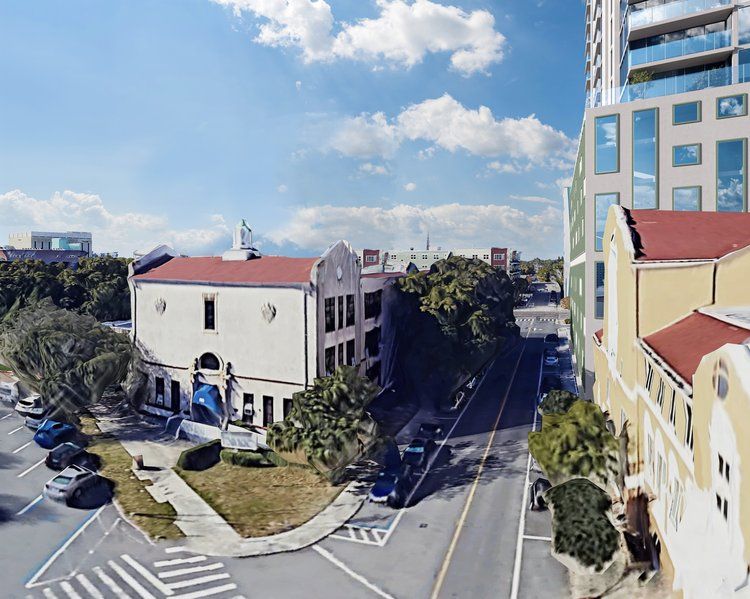Tomlinson Center for Adults Redevelopment Proposals
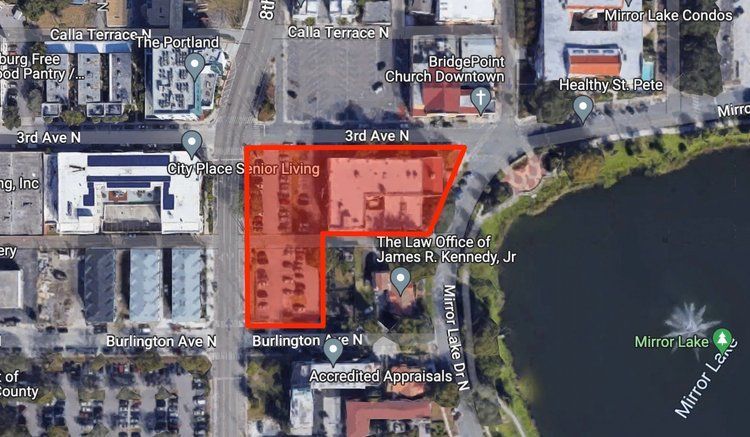
The Pinellas County School Board issued a Request for Proposal (RFP) to redevelop the 1.3 acre site of the Tomlinson Adult Learning Center that sits near Mirror Lake in Downtown St. Pete back in November (2022). The site sits west of Mirror Lake at 296 Mirror Lake Drive North, and has the former Tomlinson Adult Learning Center on site as well as two surface level parking lots. The RFP has the goal of preserving the existing building in addition to addressing a shortage of workforce housing for Pinellas County School District employees.
Four proposals were submitted by the February 1st deadline with the proposals receiving preliminary rankings based on the priorities of the School Board. The ranking puts Sherman Associates as the top contender followed by Tomlinson Community Partners, then HP Capital Managers. A fourth proposal was submitted by a joint venture between White Keys Real Estate Partners and JCT Development, but did not make the shortlist. Final rankings are expected April 11th.
Sherman Associates
Sherman Associates proposed the Tomlinson Historic Lofts and Tomlinson Tower. The proposal consists of 235 apartments split between workforce and market-rate residences. 117 units (50%) would be restricted from 90% to 120% Area Median Income for Pinellas County Schools Employees, and the other 118 units would be market rate. The preserved Tomlinson building would have 14,000 SF of retail and office space on the first floor with amenities such as a café/patio, dog park, coworking offices, and a community space that would serve business incubation, coworking, and public gatherings. The 2nd and 3rd floors will provide 27 historic lofts for residents.
The 17-story Tomlinson Tower will provide 208 apartments, a 265 space parking garage, and include amenities such as an indoor fitness center, rooftop pool, pet spa, and quiet space with east to west views of Mirror Lake and St. Petersburg. Residents in the Lofts and Tower will have access to the amenities and parking garage. There is a possibility of adding 20 to 40 residential units by raising the height of the building one to two stories or lowering the cost of the project by removing one floor of the parking structure.
Two financing plans are projected in the proposal. Option A would allow the school board to own the development financed with a tax-exempt loan through RBC Capital and subsidy provided by Penny for Pinellas. Option B would allow Sherman Associates to own the development, financed through a construction loan, HUD 223(f) permanent loan, Penny for Pinellas Program, and a Tax Incentive Finance Loan. A construction start date is estimated for January 2024, and the 17-story tower would be completed in May 2026. Units in the existing Tomlinson Center would be available for lease in August 2025.
Tomlinson Community Partners
A joint venture between Dantes Partners and Goshen + Cornerstone, Tomlinson Partners proposes 225 total residential units, with only 30% being designated as workforce housing for households with employees of the Pinellas County School District earning between 90 and 120% of the AMI. The proposed design incorporates 40 residential units in the existing Tomlinson Center with retail and amenities for the apartment community at the ground level.
The undeveloped portions of the site will contain a three-level parking podium with 182 parking spaces. Above the podium, an eleven-story residential tower is proposed at the northeast corner of the site and a seven story residential mid-rise along 8th street north will contain 185 residential units. The ground floor of the mid-rise would contain retail and amenity space. Tomlinson Community Partners propose to enter a long-term ground lease with Pinellas County if awarded the project. The terms would include a $90,000 annual rental payment with an annual increase of 3.5% for a minimum of 50 years.
The workforce housing will be financed with conventional debt, developer equity, and equity that is generated from the sale of federal Historic Tax Credits. New construction of the development would be financed by developer equity, and debt partners. The anticipated cost of the project is $62 million with completion in July 2026.
HP Capital Managers
HP Capital Managers is a group of local St. Pete Developers. They submitted two possible plans for the site. The first plan would see development of a new tower to the west of the Tomlinson Center, and the second plan would renovate the existing building, and leave the surface parking lots as is with no developments. The project HP Capital Managers has proposed is dubbed The Terraces at Tomlinson.
Both plans set aside all new and future vacant residential units for School Board Employees with a designated “first look period”. After the first look period expires for a unit, it would be made available to the public. Plan A would construct a 13-story tower with 222 units on the existing surface parking lot west of the Tomlinson building. The tower would have a three-story parking pedestal with ten stories of residential units on top. The Tomlinson building would be refurbished and modernized with 40,000 square feet of office/retail space. 89 of the residential units will be for income-restricted households making 60% AMI or less, and the remaining 133 units rented out at market rate.
Plan A is estimated to cost $94.25 million, financed through tax credit bonds, Penny for Pinellas, city housing grants, city historical restoration grants, developer equity, and traditional debt. Plan A could break ground late 2024 with construction complete in mid-2026. Plan B would convert the existing Tomlinson building into 48 workforce units for households making less than 80% AMI, with no tower being built on the surface parking lots. Plan B is an estimated $9.99 million financed though Penny for Pinellas, city housing grants, city historical restoration grant, developer equity, and traditional debt. Plan B could break ground in early 2024 and be completed mid-2025.
Source: St. Pete Rising
Thank you for your interest. If you are in need of Appraisal & Valuation Servies in the St. Petersburg Market contact:
Mike Cliggitt, MAI, MRICS, CCIM
813.405.1705 - Direct Line
SHARE CONTENT
